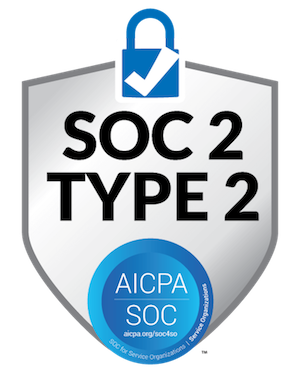
Check vs Wire Transfer: Speed, Security, and Cost Compared
When businesses need to send money, they are often confused between the two prominent payment methods: checks and wire transfers. Wire transfers might be modern and seemingly quick, but they have their shortcomings. Additionally, despite the rise of digital payment, checks are still largely preferred. This is due to their strong audit trails, legal admissibility, and recipient-friendly structure.
In this blog, we will delve into check vs wire transfers across various categories, including speed, cost, security, and more. We will also go over how the PostGrid Check API can eliminate the friction points associated with manual handling and bring modern convenience to bank transfers.

Key Takeaways
- Checks offer greater control and flexibility, as you can decide when the funds will be deducted. Once a wire transfer for closing is through, your money will be debited instantly.
- Wire transfers offer limited documentation. However, you receive a detailed audit trail with each check, which is both acceptable and preferred by businesses in regulated industries.
- Checks are cost-effective, especially when you automate the printing and mailing. Wire transfers come with undisclosed deductions, leading to unpredictable shortfalls.
- You can eliminate any risk associated with traditional check handling by using the PostGrid Check API. It will expedite the process, minimize errors, and provide audit transparency.
What Are the Advantages of Using a Check Over a Wire Transfer?
Control Over Payment Timing
When you use a check to transfer money, you can pre- or post-date it to control when the funds will be deducted. You can also issue it in advance without triggering any immediate debit. You can also batch and schedule printing and mailing of hundreds of pieces to different recipients using our Check API solution.
Wire transfers are an ACH payment, which is instant. As soon as the process is initiated, the money gets deducted from your bank account. You cannot reverse, delay, or modify the transfer of funds. This can create problems if you make errors, such as entering an incorrect account number or amount. The banks will not be able to fix it automatically. You will need to file a formal investigation and wait for a response, which may take days or weeks. Moreover, there is no guarantee of financial recovery.
Suitable for Legal, Government, and Regulated Use Cases
Checks are considered a formal document, which is admissible in legal disputes. Wire transfers do not offer the same level of evidentiary support unless you provide additional documents. Moreover, government agencies and regulated businesses still prefer checks due to the ease of paper-based record retention.
With wire transfers, you get a minimal transactional footprint. You will get the bank reference number and some of the recipient details. Since government organizations and regulated businesses are required to comply with strict auditing and transparency requirements, this information is insufficient.
Makes Reconciliation Simple
When you issue checks through our automated platform, you will have access to all the details listed on your dashboard. It will include the check number, payee name, memo field, and more. This will make reconciliation easier for the accounting teams.
Wire transfers are traceable, but not in the same detailed and transparent manner as a check. After a successful electronic transfer, you will get a transaction reference number, date, and the name of the recipient’s bank. However, in your bank statement, this information might be truncated. Your accounting team will have to contact the recipient or the bank to confirm other details for reconciliation.
Widely Accepted Internationally
Most international banks, especially those with multinational branches, accept USD checks without requiring currency conversion. You can use them to pay international contractors and vendors across Canada, the UK, and other countries with banking ties to the US.
When you wire money, you must consider the complex international standards, such as SWIFT, IBAN, and BIC. You also need to be cautious about the bank codes and field formatting, which vary by country. A minor mistake in these areas can lead to rejection and funds being held for days or weeks. This can impact the operational efficiency of businesses sending frequent or high-volume cross-border payments.
Why Are Checks More Secure Than Using Wire Transfers for Payments?
There is a well-established and widely enforced regulatory protection for check transactions in the US. Financial institutions, such as banks, offer fraud detection services, including the Positive Pay System. This involves banks cross-checking every deposited check with the list provided by the businesses of the issued pieces. This makes them a secure and highly preferred method of disbursement.
If a check is lost or misdirected, you can avail of the stop payment service. It will cancel the transaction before it is cashed. This window provides businesses with sufficient time to act on and prevent financial losses. Moreover, you get a physical, traceable audit trail. This contains all the necessary details to verify transactions, detect anomalies, and resolve disputes.
The irrevocability of wire transfers makes them an easy target for cybercriminals. According to the FBI’s IC3 report, U.S. businesses and individuals suffered $20 billion in reported losses due to fraudulent wire transfers initiated through scams, such as Business Email Compromise (BEC). Fraudsters pose as vendors and trick employees into sending funds to an unauthorized account. Once the transfer is successful, the money cannot be recovered, as it cannot be stopped, unlike a personal check.
Additionally, the security measures in wire transfers focus more on post-facto investigation rather than prevention. When a fraud occurs, companies are left to deal with loss recovery rather than preventing the breach in the future.
How Long Does It Typically Take for a Check to Go Through Compared to a Wire Transfer?
A traditional wire transfer is only completed on the same business day if it is domestic and initiated before the bank’s cut-off time. If they are processed after that, on weekends, or holidays, they will be delayed to the next business day.
International wire transfers can take up to five business days. It depends on the recipient’s bank, time zone, currency conversion, and the involvement of intermediaries such as clearing houses. The perceived “instant” nature is only reliable in limited scenarios, such as when the transaction takes place between the same bank.
Traditionally, checks used to take two to five business days to clear. This is because it involved steps like manually writing it, printing it, and mailing it. However, you can accelerate this with our automated platform. Our Check API allows businesses to generate, print, and send checks at scale within a day. This is because it reduces the administrative overhead and the delays associated with manual handling. Moreover, the clearing time is predictable and less dependent on the banking networks and international protocols.
What Are the Costs Associated With Using Checks vs Wire Transfers to Send Money?
What is the Cost Involved in Sending Checks?
Printing Cost
This runs between 10 and 50 cents per check, depending on the quality. If you prefer pre-printed pieces with built-in security features, such as MICR lines, holograms, and microprinting, the cost may increase slightly.
Postage and Mailing Cost
This involves the price of the envelope and postage. This will cost you around $3 per piece. However, using our Check API, you can bring this down to $1.10. We will automate the printing, stuffing, postage, and tracking. If you have to send them in bulk, we also offer attractive discounts. With us, you can maintain a predictable payment schedule.
How Much Does It Cost to Use a Wire Transfer?
Outgoing Fee (Domestic and International)
Most U.S. banks charge anywhere between $15 and $30 per transaction for domestic wire transfers. The international direct deposit method costs between $35 and $70 per transaction, depending on the destination and the bank.
When considering the time zone, banking holidays, and compliance checks, the so-called “fast” method is not only expensive but can also lead to delays. If you send out payments frequently or in large batches, this fee can quickly add up in total closing costs and negatively impact your profitability.
Recipient-Side Fee
Banks charge between $10 and $20 to receive the funds. This can be frustrating for small vendors, freelancers, and individual recipients who expect to receive the full amount.
Since the recipient received less than what they invoiced, it can sour the relationship between the involved parties. In contrast, there is no cost for depositing a check, whether physically or digitally using a mobile device. The payer is entirely responsible for the entire cost of the transaction.
Intermediary Bank or SWIFT Network Fee
If the sender and recipient banks do not have a direct financial relationship, an intermediary bank or ACH intervenes. They serve as a bridge within the SWIFT network. However, they don’t work for free. They charge a processing fee, ranging between $10 and $30. Neither the sender nor the receiver is notified in advance.
The lack of transparency can lead to a payment shortfall. This will require the payer to send additional funds to compensate for the shortfall. In contrast, checks are transparent and free from intermediary interferences. There are no silent deductions, and the recipient gets exactly what was issued.
Currency Conversion Fee
For an international wire transfer, your bank will convert the funds into its local currency. For this, they charge a currency conversion fee. However, instead of listing it separately, they include it in the amount that you are sending. Since they are not disclosed upfront, it can lead to a shortfall. In contrast, there are no hidden fees when you send checks internationally.
Are There Any Risks Involved in Using Either Method for Financial Transactions?
Manual check handling is riddled with challenges. Aside from being prone to manual errors, it is also an easy target for financial crimes, which can include check fraud, alteration, and counterfeiting. However, it is essential to understand that the issue lies with the way the process is carried out, rather than the payment method. We can assist you in resolving it.
Our Check API solution is designed to minimize the risk associated with the physical handling of paper checks. We automate the process by integrating the API with your accounting or CRM system. The auto-fetch feature eliminates any possibility of manual errors. Additionally, we only use checks that feature bank-grade security, including MICR lines, holograms, and microprints. This leaves no room for fraudsters to manipulate the information on the paper.
With the growing adoption of automation, many businesses now prefer electronic checks over paper-based ones. When comparing electronic check vs wire transfer, eChecks offer the same benefits as physical checks, such as controlled fund release and audit trails. They also enable faster processing and integration into digital workflows. This makes them a practical choice for organizations seeking compliance, flexibility, and speed without compromising on record-keeping. With our solution, you can generate paper checks, digital checks, and echecks.
On the other hand, wire transfers are not only vulnerable to cybercrime but also lack transparency. Since multiple financial institutions are involved, tracking progress can be a tedious task. If the wire is delayed, lost, or flagged by the compliance team, you will have to wait days or weeks to get a solution. If you are operating under a tight deadline, this can disrupt operations and adversely impact your relationship with the involved parties.
Use PostGrid Check API For Automated and Secure Printing and Mailing
Our solution automates the entire check issuance process. With just a few clicks, you can trigger generation directly from your CRM or accounting software. Aside from using secure pieces, we also handle your sensitive information with utmost care using data encryption in transit and at rest. Additionally, the real-time tracking and reporting from the dashboard will offer complete visibility of every mailed piece. To see how it works, request a demo now.
FAQs
What to Do If I Cannot Reverse a Wire Transfer Like a Check?
Wire transfers are final and irrevocable. Your only option is to file a wire recall request with the bank. They will contact the recipient bank and try to retrieve the funds if they have not been withdrawn. The process is slow and uncertain and does not guarantee the recovery of money.
How Do Banks Verify Wire Transfers Compared to Checks?
Wire transfer is a trust-based system. When a request for electronic transfer of funds is submitted, the bank verifies the sender’s identity and checks the recipient’s bank details. It will run the transaction through anti-money laundering (AML) and fraud detection filters. However, after approving the transaction, the bank does not verify who received the money. This makes it an easy target for scams such as phishing or social engineering crimes.
Checks go through multiple levels of verification. Banks check the account details and physical characteristics of the check. They will also implement the Positive Pay system to cross-reference deposited checks against the list of checks that have been issued. This prevents forging.
When Should I Use Checks and Wire Transfers?
You can send a check in situations that require a physical documentation trail, such as:
- Legal settlements
- Tax refunds
- Payroll disbursements
- Insurance payouts
Their documentation, scheduling, and security make them ideal for recurring payments, batch processing, or any scenario where traceability is just as important as speed.
You can use a wire transfer for urgent and one-time transactions, such as real estate closings or emergency fund transfers. However, they lack the flexibility and auditability required in a structured financial workflow.









